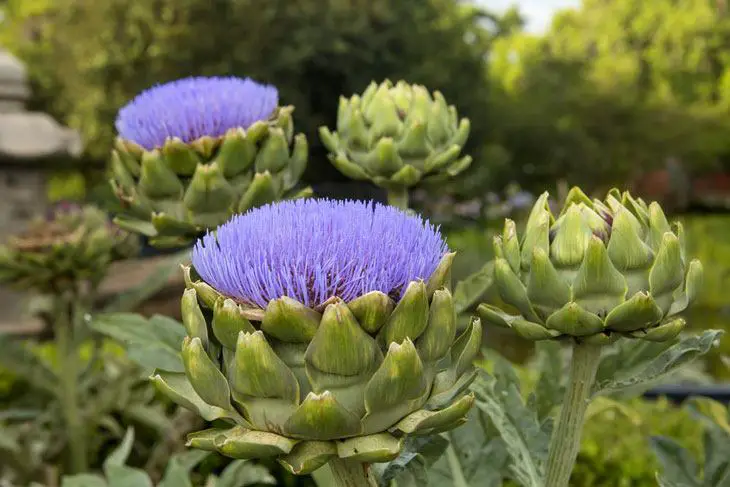

Artichoke plants grow 3 to 5 feet tall, and their spiny gray-green foliage makes them useful as edible ornamentals. Growing ArtichokesĪ month after planting, drench actively growing artichokes with a high-nitrogen liquid fertilizer to invigorate new growth. When setting out artichoke seedlings, plant them slightly high, so that the crown is well above the soil line.įor recommended planting dates for your local climate - and to design your garden beds - try our Vegetable Garden Planner. In areas where artichokes are grown as perennials, container or bare-rooted plants can be set out in spring. Globe artichokes have average fertility needs, similar to those of tomatoes. Before transplanting artichokes, enrich each planting hole with a balanced organic fertilizer, and space plants 3 feet apart. Exposure to cool temperatures below 45 degrees is necessary to trigger flowering. Set artichoke plants out in prepared beds 3 to 4 weeks before your last frost date. Six weeks before your last frost date, start hardening off seedlings by gradually exposing them to bright sun, wind and cool temperatures. The large seeds will germinate within a week at warm room temperatures, and seedlings should be potted into larger containers as they grow. Start artichoke seeds indoors in late winter, under bright florescent lights. Purple artichokes include ‘Violetta,’ an heirloom variety hardy to Zone 6, and the fast-maturing ‘Opera’ hybrid. Green artichoke varieties include ‘Imperial Star,’ the best variety to handle as an annual, and ‘Green Globe,’ a heavy-bearing perennial hardy to Zone 7. The edible plant parts are the immature artichoke flower buds. Growing artichokes from seeds started in late winter will produce edible buds in midsummer and fall. In most areas, though, globe artichokes must be grown as annuals. Where winters are mild, you can grow globe artichokes as perennials, replacing plants every four years. Native to the mild climates of the Southern Mediterranean, globe artichokes ( Cynara scolymus) are half-hardy perennial thistles that are easily killed by temperatures below 20 degrees Fahrenheit. (For details on growing many other vegetables and fruits, visit our Crop at a Glance collection page.) Grow some in your garden to experience a real treat. Artichokes aren’t the easiest crop to prepare in your kitchen, but their rich flavors are worth the work.


 0 kommentar(er)
0 kommentar(er)
